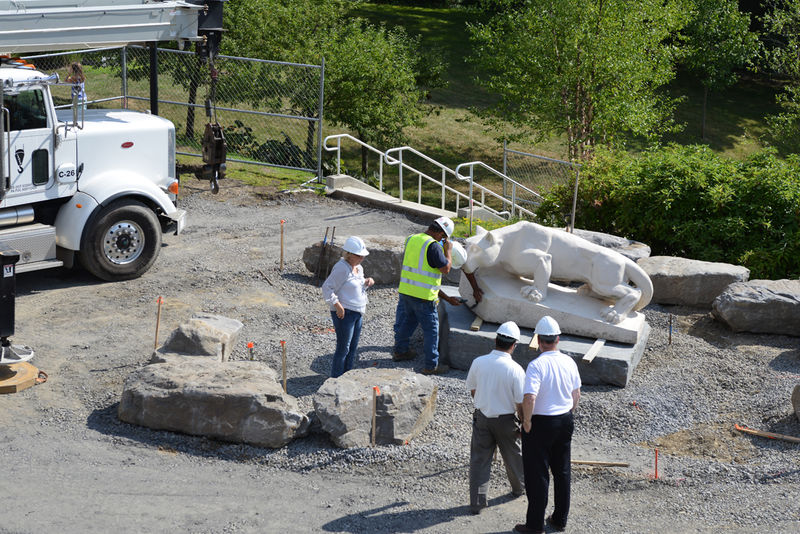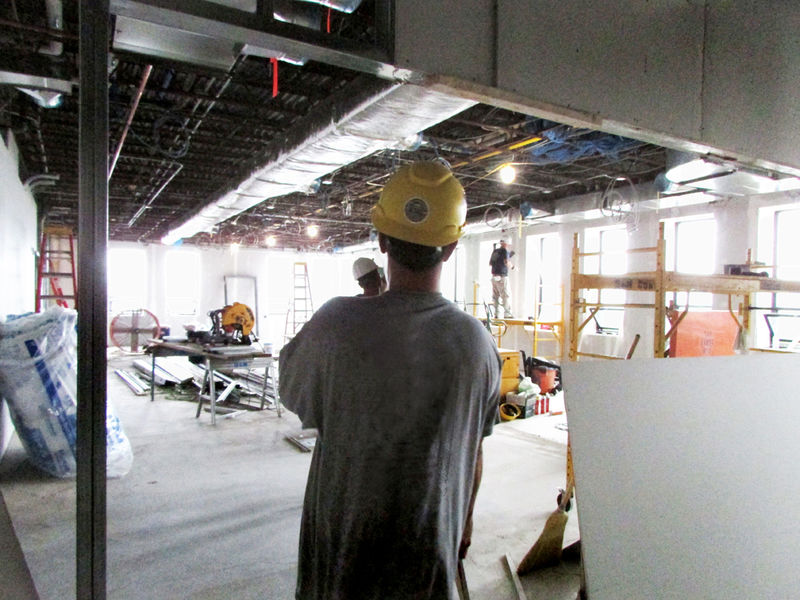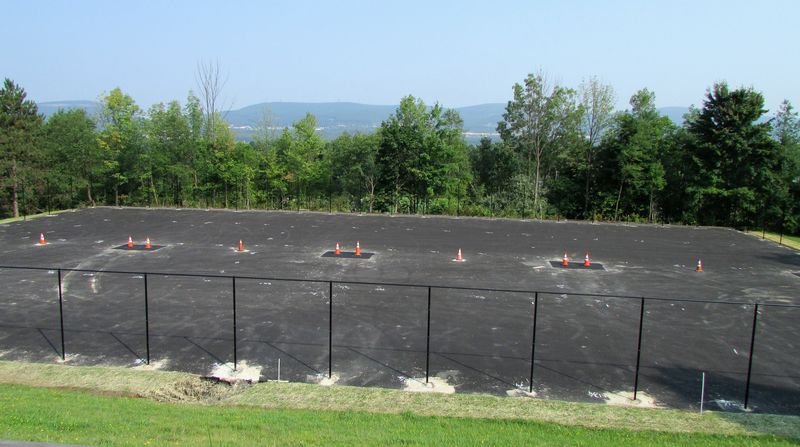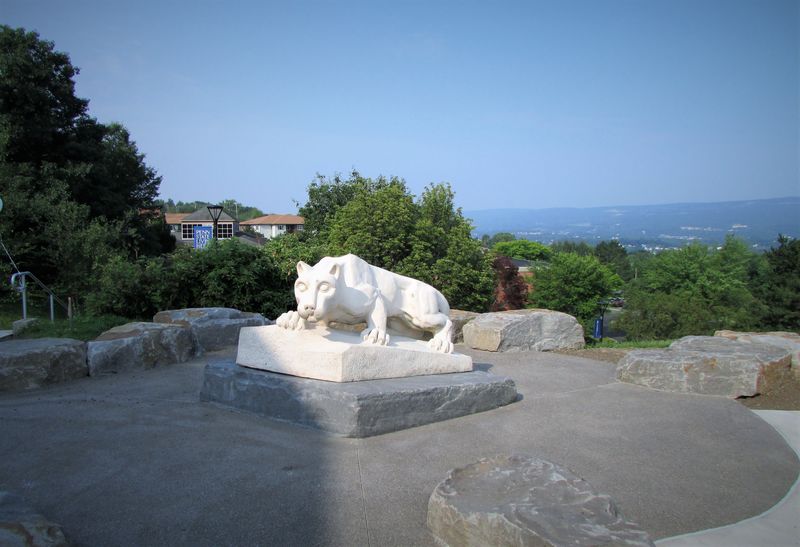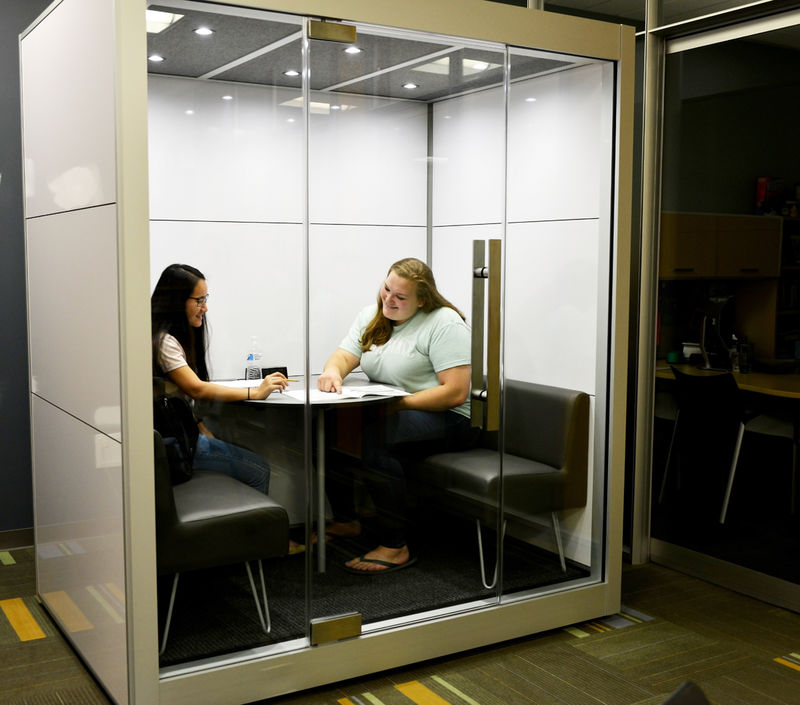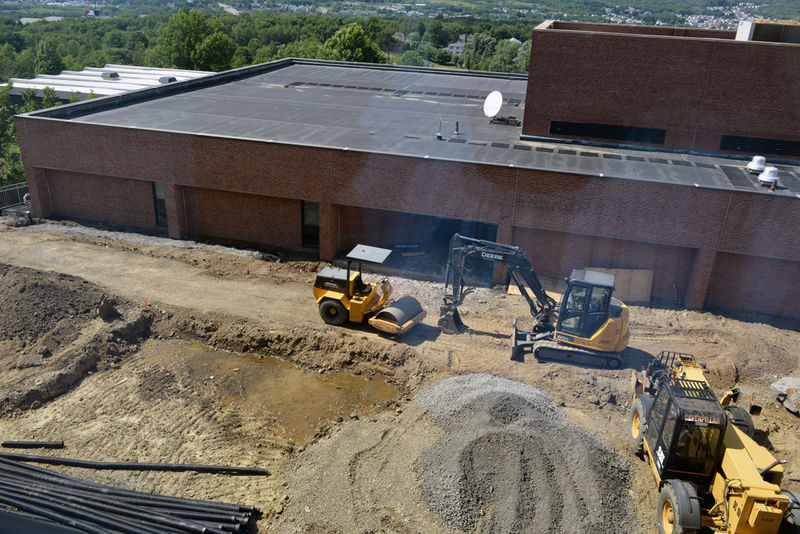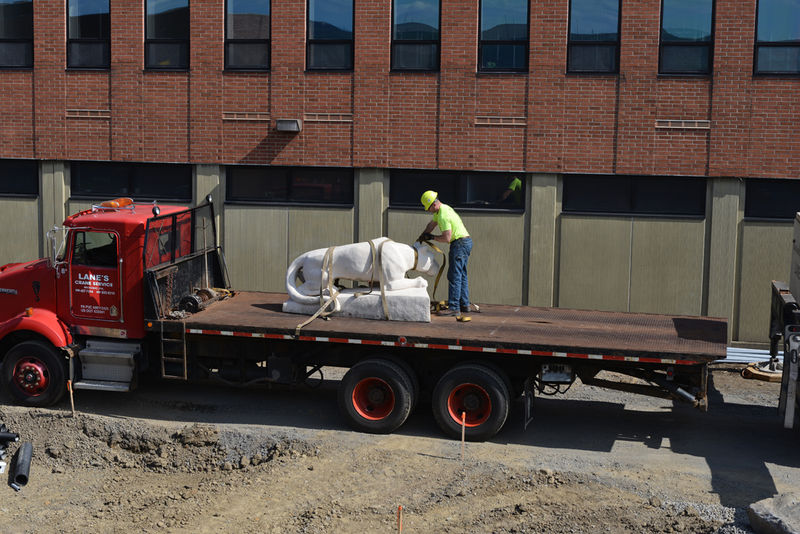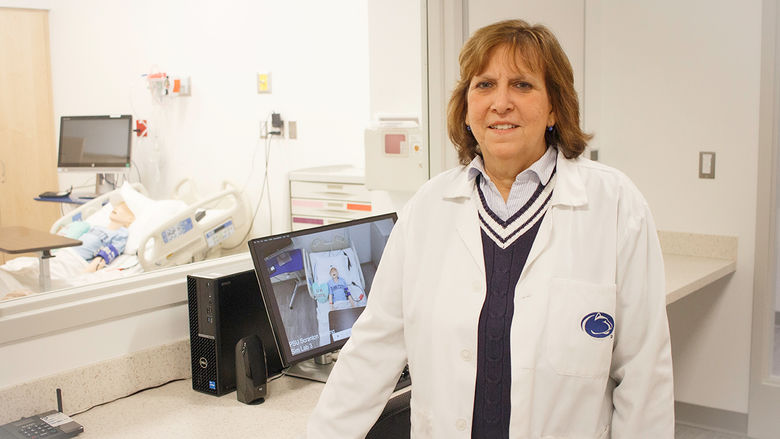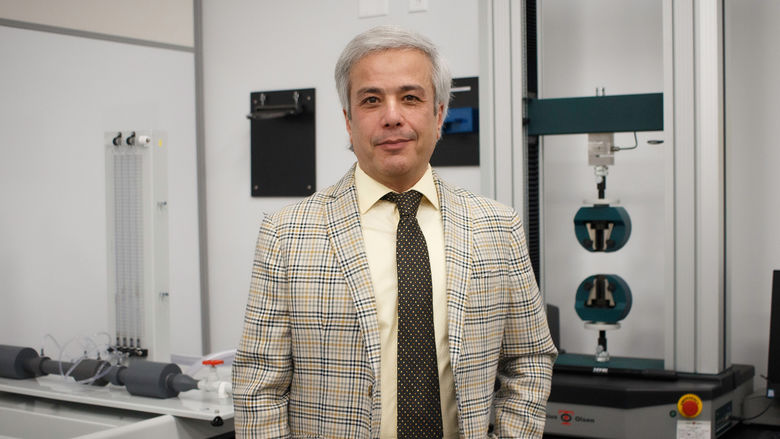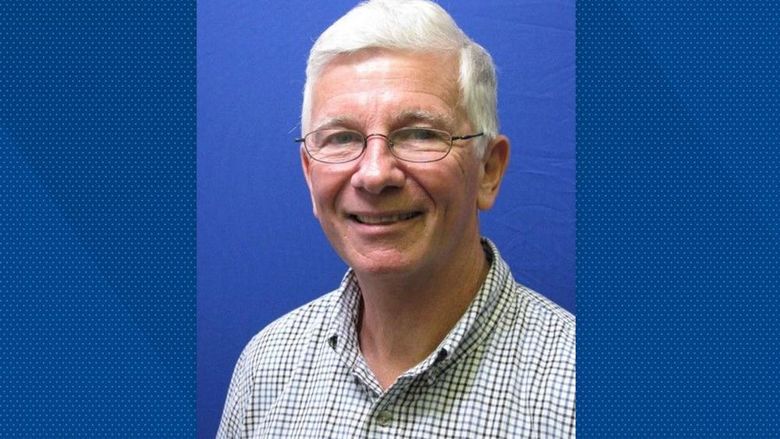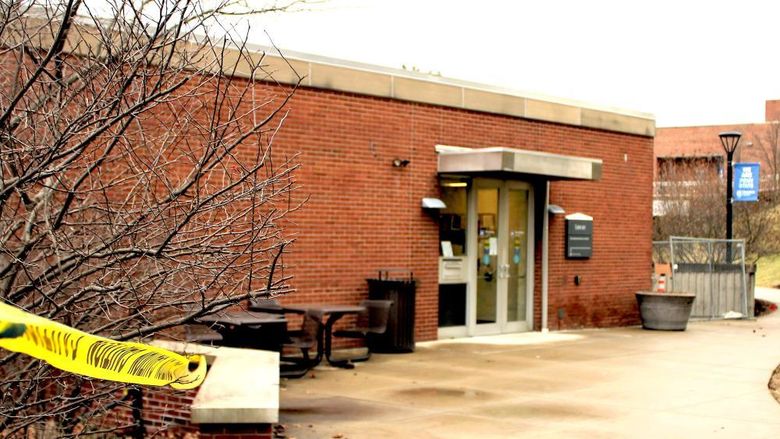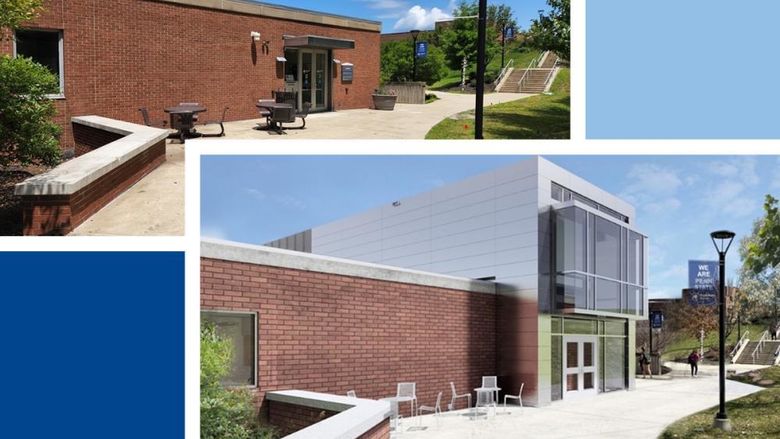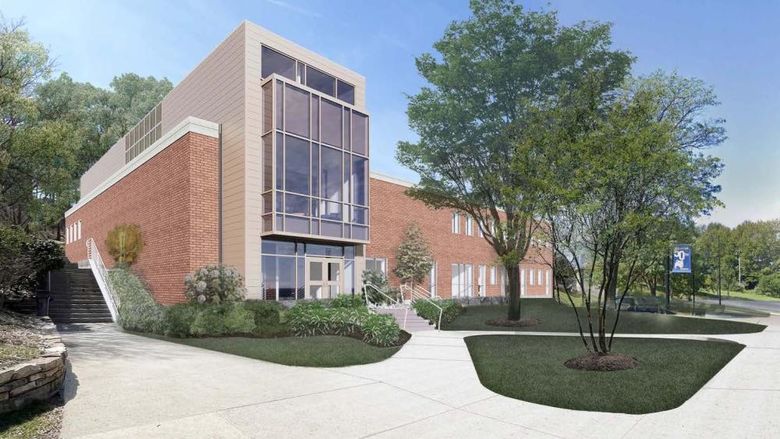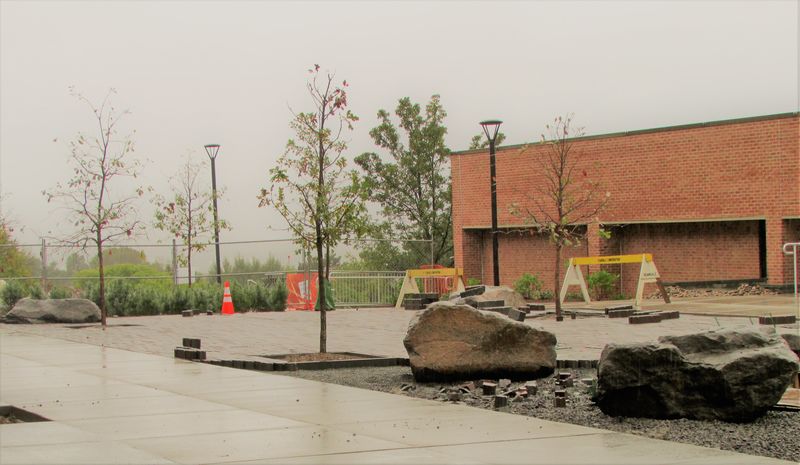
The new patio between the Study Learning Center and Dawson Building is starting to take shape and should be completed in just a few weeks. New concrete has been poured, trees and shrubs have been planted, bricks are being laid in some areas and large decorative boulders are in place.
Credit: Penn State
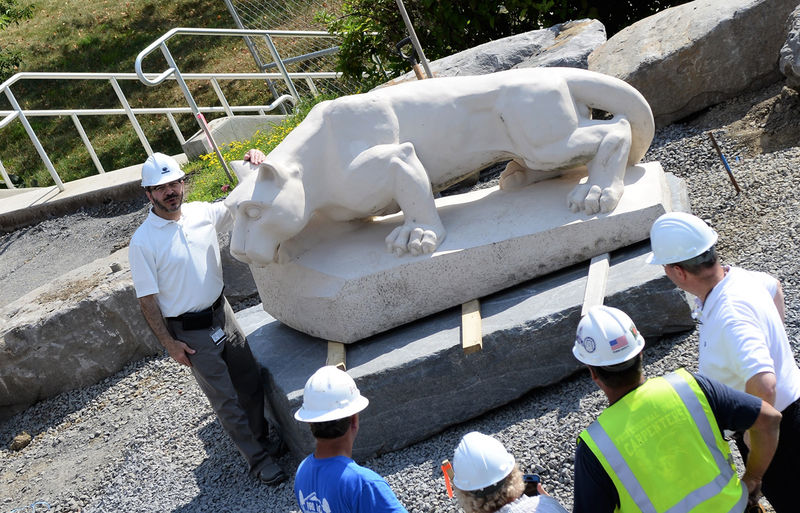
After careful measuring, leveling and making sure the placement and angle of the Nittany Lion was just right, the construction crew in charge of moving the Lion to its new home removed the straps that were used to move the icon and take a moment to admire their work, while campus Chancellor Marwan Wafa poses for a photo on this historic day.
Credit: Erika Winklebleck
